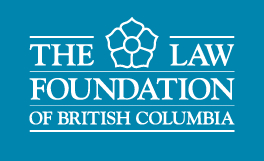Completed
Gender Diversity in Legal Writing: Pronouns, Honorifics, and Gender-Inclusive Techniques
Overview
Like the law, language and styles of writing evolve over time to meet the needs of new generations. One such shift is towards language that reflects a modern understanding of gender and gender identity. Inclusivity can no longer be limited to masculine and feminine but must be extended to include people who identify as non-binary, agender, two spirited, or genderqueer. To meet these needs, the British Columbia Law Institute is creating a guide to ‘Gender Diversity in Legal Writing: Pronouns, Honorifics, and Gender-Inclusive Techniques’ (Guide).
The Purpose of the Guide
Legal writing comprises many forms: legislation, court submissions, opinion letters, transactional writing (e.g., contracts, wills), communications with clients and other lawyers, legal memoranda, legal texts and academic writing, court forms, judgments and decisions, and other reports and papers. Ultimately, the writer must choose the gender inclusive techniques needed for their audience and subject matter. The methods and tools explored in this publication give legal writers guidance to consider inclusivity in their writing.
The Guide:
- Defines terms and addresses common misconceptions associated with certain terminology (e.g. transgender, not transgendered);
- Outlines techniques to reflect inclusivity and gender neutrality, including review of honorifics, greetings, and pronouns;
- Provides examples of how to incorporate gender inclusivity into one’s own writing style; and
- Provides a list of resources for legal writers who want to learn more.
The Importance of Gender Diversity in Legal Writing
Gender-inclusive legal writing demonstrates a high level of professionalism and commitment to justice. It shows the writer’s commitment to the ideals underlying the legal profession and respect for their audience.
Inclusive language is important because it recognizes diversity and seeks to avoid discriminatory terminology. Inclusive language does not discourage a writer from discussing differences when it is important to do so. Instead, it asks that a writer not exclude and marginalize people by drawing differences or using exclusionary language where differences are immaterial to the information being conveyed. More specifically, it respects ability, indigeneity, race, ethnicity, gender, gender identity, sexual orientation, age, and other attributes of personal identity that have been used to discriminate against and marginalize persons with those attributes.
The Guide supports all legal writers in this goal- from long term practitioners seeking to learn a new way of writing, to new lawyers beginning their careers with best practices.
Keywords: gender; inclusive; diverse; neutral; legal writing; research; grammar; sentence construction; honorifics; greetings; pronouns; writing style; Canada
Funder

Gender Diversity in Legal Writing: Pronouns, Honorifics, and Gender-Inclusive Techniques is funded by the Law Foundation of British Columbia.
Related Files
Below you will find additional, relevant and specific documentation, backgrounders, research, resources, media releases and summaries that have been, or will be incorporated into our final publications and study papers.
If you have questions about these or other specific documents, please reach out to BCLI using our contact page or at the bottom of each page of our website.








































